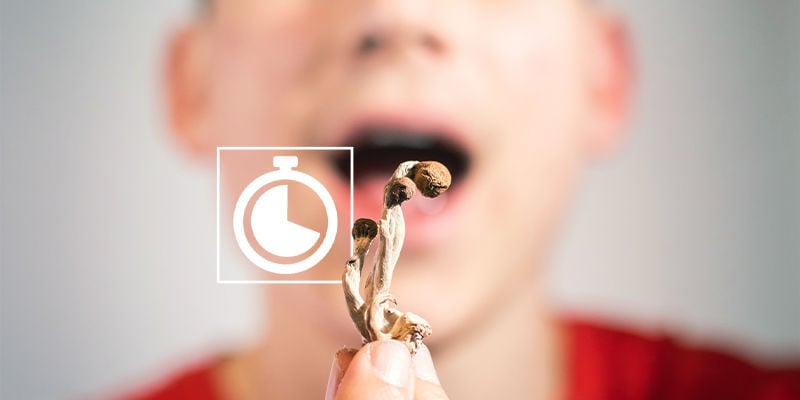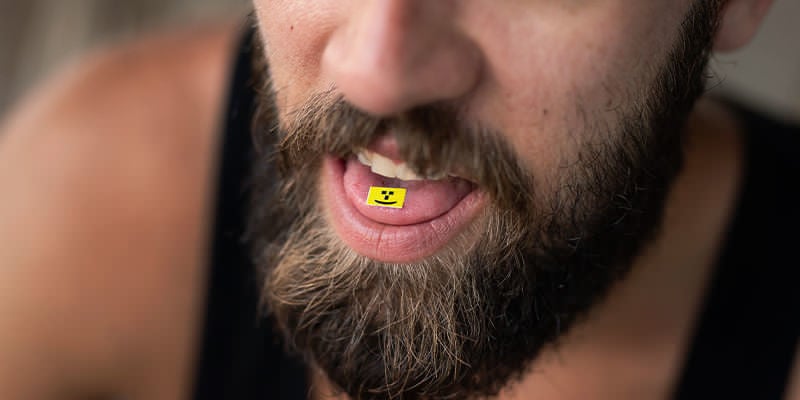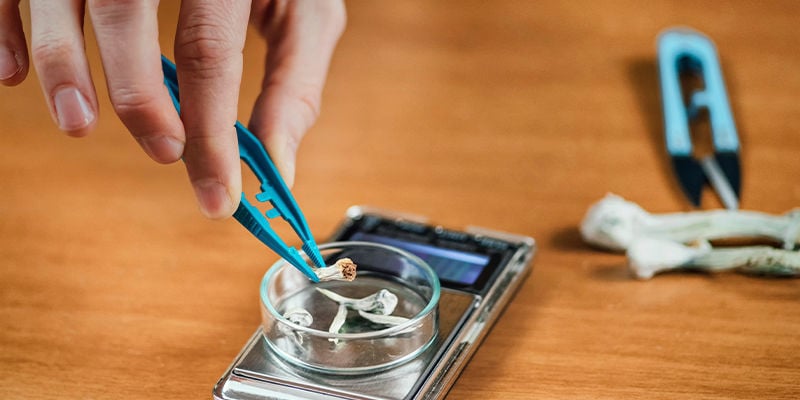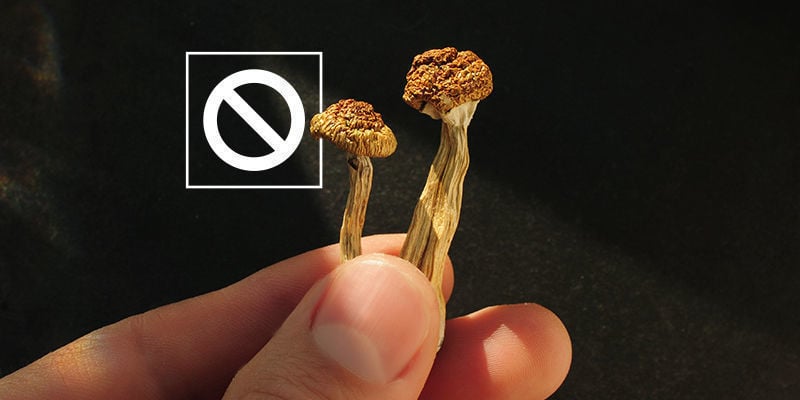
Can You Build A Tolerance To Magic Mushrooms?
Did you know that it's possible to build a tolerance to magic mushrooms? Fortunately, it's not long-lasting, meaning your trips will be at their peak once again after a short reset period. Find out why this tolerance occurs, how long you need to wait before tripping again, the impact of microdosing on tolerance, and more.
We're sure you remember your first time taking magic mushrooms; the planning involved, preparing the most comfortable environment for your trip, and sharing the experience with your closest friends. There's nothing quite like it. And while everyone's introduction to psychedelics is different to some degree, this initial trip likely felt profound and insightful.
But, over time, with repeated use, did you know you can actually build up a tolerance to magic mushrooms that impacts the strength of the trip? In this article, we delve into everything you need to know about psilocybin tolerance, how it works, and what you can do to ensure each magic mushroom trip is equally rewarding.
Why does the body build a tolerance to magic mushrooms?

So, why is it that the body builds a tolerance to psilocybin mushrooms in the first place? It’s all in the name; psilocybin, which converts into the highly psychoactive compound psilocin once digested, interacts with the body's serotonin receptors. These receptors are found in areas of the brain responsible for regulating cognitive function, mood, perception, and more. Over time, with repeated use of magic mushrooms, these receptors, specifically the 5HT2A receptors, are downregulated, which causes the body to become desensitised to the effects of psilocin (“Psilocybin,” 2016).
This can then lead to users increasing their dose in hopes of achieving a comparable trip to the one before, in turn leading to either diminished returns or a trip too intense, as users may unknowingly under or overcompensate.
Dependence vs tolerance
While magic mushrooms are not considered “classic drugs of abuse”, it’s worth distinguishing between dependence and tolerance. In this context, tolerance has to do with the reduction in effectiveness that occurs with regular, repeated psilocybin use. On the other hand, when we look at dependence, this has more to do with the physical condition and side effects of being reliant on a substance. In turn, physical dependence is inherently linked to withdrawal and its symptoms. Furthermore, being tolerant to a substance does not necessarily indicate dependence or addiction.
As mentioned, magic mushrooms are generally not considered addictive, as their use is by and large “episodic” and “experimental” (“Psilocybin,” 2016).
How long does magic mushroom tolerance last?

Fortunately, magic mushroom tolerance is not a long-lasting affair. It takes just around two weeks for serotonin receptors to return to their base level. Once this time has elapsed, users can experience the full effects of a given dose.
It is entirely possible to continue taking psilocybin mushrooms during this two-week period. However, the effects of a given dose will wane with increased frequency. As such, users need to increase their dose if looking to achieve the same magnitude of trip as before—and this dose may need to be much higher. For this reason, it’s advised to wait the full two weeks before attempting to experience a full-blown psilocybin trip. This way, your stash of shrooms will last longer, and you won’t risk accidentally having an overwhelming experience.
Calculating magic mushroom tolerance
But just how do you go about calculating your magic mushroom dose if you’re looking to consume within that two-week window? As we know, leaving it to chance and randomly adding more may result in a more intense trip than desired.
Thankfully, mushroom tolerance calculators exist online, which allow you to get closer to determining a suitable amount. By entering your last dose amount, your desired amount, and the number of days since consumption, the calculator will work out an estimated dose capable of delivering the same effects as your previous one, taking into account the tolerance you may have built in this time.
Magic mushroom cross tolerance

When it comes to psilocybin tolerance, it's not only magic mushrooms that are of relevance. In fact, any serotonergic substance—a substance that activates serotonin receptors—has the ability to play a role too. And as it happens, most of the “classical" psychedelic drugs are serotonergic substances.
For example, LSD interacts with serotonin receptors in very much the same way as psilocybin, and can inadvertently produce a tolerance, even if the user has not consumed magic mushrooms around the same time. This means in the period after LSD has entered a user's body, the diminished effectiveness of psilocybin will already be in place by default.
Generally, the same rules apply in terms of the longevity of cross-tolerance. It takes just around two weeks of non-use, of all serotonergic substances, for the base level to return.
Shroomshop
Zamnesia's Shroomshop stocks a wide variety of magic truffles, mushroom growing kits, spore prints, and more.
Microdosing to overcome magic mushroom tolerance

Some magic mushroom users have taken it upon themselves to microdose psilocybin in hopes of managing their tolerance, albeit with mixed results. The idea with microdosing is to take a tiny dose of psilocybin several times per week for a period of several weeks. While the amount consumed isn't enough to produce a high, the near-constant presence of psilocybin in the body can form a new base level, which can result in users increasing their dosage over time. Note, however, that most microdosing protocols—such as those by Fadiman and Stamets—suggest a reset period of 2–4 weeks after completing a cycle in hopes of avoiding this issue.
Of course, there are other factors to consider, such as genetics, weight, and age, amongst others, but it’s unclear whether microdosing actually bypasses the issue of tolerance or not. For example, a study carried out in 2018 (Johnstad) found that some of the participants built up a tolerance when microdosing, whereas others did not.
That said, you certainly don't have to look far to find plenty of anecdotal evidence from the psychedelics community; online forums are rife with microdosing proponents. But more concrete evidence is required in order to truly determine the impact of microdosing on magic mushroom tolerance.
Taking a break from psychedelic mushrooms to reset your tolerance

As you can probably tell by this point, the most effective way to reset your tolerance is to simply take a two-week break. As the saying goes, it’s possible to have “too much of a good thing”. There's no denying that the experience of taking magic mushrooms and other hallucinogenic drugs can be a wholly profound one. But taking the time to reset your serotonin system is a good thing, and not just for your body; this reset period also gives you plenty of time to really reflect on your trip. With many users feeling “revitalised” after a psychedelic experience, it’s important to appreciate and apply that newfound enthusiasm for life, rather than immediately seeking to experience such insight again.
And, as mentioned, trying to increase the dose during this time may have a more detrimental impact than a positive one. Too low often results in diminished returns, and too much can be too intense, not to mention wasteful. So keep the ritual of taking magic mushrooms a sacred and special one. As we know, these are not party drugs or something to overindulge in, so treat your psychedelics with respect, and you simply can't go wrong.
- Johnstad, & P. G. (2018). Powerful substances in tiny amounts. Nordic Studies on Alcohol and Drugs, 35(1), 39–51. - https://journals.sagepub.com
- Psilocybin. (2016/01/01). Meyler’s Side Effects of Drugs, 1048–1051. - https://www.sciencedirect.com
-
 7 min
17 September 2021
What Are The Strongest Magic Mushroom Species?
You've probably heard of cubensis and liberty caps, what about Psilocybe azurescens or Panaeolus cyanescens? And did you know there are over 200 species of psilocybin-containing magic mushrooms in...
7 min
17 September 2021
What Are The Strongest Magic Mushroom Species?
You've probably heard of cubensis and liberty caps, what about Psilocybe azurescens or Panaeolus cyanescens? And did you know there are over 200 species of psilocybin-containing magic mushrooms in...
-
 8 min
25 April 2021
Magic Mushrooms Versus LSD: What's The Difference?
If you take enough LSD or magic mushrooms, you'll end up on an exciting, eye-opening trip for the next several hours of your life. The particular substance you take, however, will have an impact on...
8 min
25 April 2021
Magic Mushrooms Versus LSD: What's The Difference?
If you take enough LSD or magic mushrooms, you'll end up on an exciting, eye-opening trip for the next several hours of your life. The particular substance you take, however, will have an impact on...
-
 3 min
22 February 2021
Are Magic Mushrooms Addictive?
Ever wonder why you can’t trip on magic mushrooms day after day? Keep reading to find out what centuries of use has taught us about shrooms and addiction.
3 min
22 February 2021
Are Magic Mushrooms Addictive?
Ever wonder why you can’t trip on magic mushrooms day after day? Keep reading to find out what centuries of use has taught us about shrooms and addiction.
-
 9 min
19 April 2019
How To Prepare For A Safe Psychedelic Trip?
Here at Zamnesia, we want to make sure you have a good trip on your first plummet down the rabbit hole. Follow these guidelines whether you just want to giggle uncontrollably for a while or give...
9 min
19 April 2019
How To Prepare For A Safe Psychedelic Trip?
Here at Zamnesia, we want to make sure you have a good trip on your first plummet down the rabbit hole. Follow these guidelines whether you just want to giggle uncontrollably for a while or give...













 United States
United States











